Stinging Nettle, scientifically known as Urtica dioica, is a perennial flowering plant that has been a part of human history for centuries. Often regarded as a mere weed or irritant, this plant holds a treasure trove of benefits that many are unaware of. In this comprehensive article, readers will delve deep into the world of Stinging Nettle, exploring its history, uses, benefits, and the science behind its unique properties. By the end of this piece, readers will have a newfound appreciation for this often-underestimated plant and will be equipped with the knowledge to harness its potential in various applications.
Stinging Nettle, Urtica dioica: A Comprehensive Overview
From its rich history in traditional medicine to its modern-day uses in the culinary and health sectors, Stinging Nettle is a plant that continues to surprise and impress. This article aims to shed light on all facets of this remarkable plant, supported by statistics, research, and expert opinions to provide a well-rounded and informed perspective.
What will you learn from this article?
- The historical significance of Stinging Nettle.
- Its varied applications across different industries.
- The science behind its medicinal properties.
- Expert opinions and research findings on its benefits.
Table of Contents
- Historical Significance
- Botanical Description
- Where does Stinging Nettle Grow?
- Medicinal Properties
- Culinary Uses
- Modern-Day Applications
- Expert Opinions and Research
- Frequently Asked Questions
- Final Thoughts
- Sources
Historical Significance
Stinging nettle has a rich history that intertwines with human civilization, reflecting its diverse applications and the adaptability of this plant across various cultures and continents.
Ancient Textiles and Clothing
Nettle has been used to make clothing for almost 3,000 years. Archaeological findings, such as ancient nettle textiles from the Bronze Age found in Denmark, attest to its long-standing use. The fibers from nettle stems, similar to those from flax, have been traditionally used for textiles due to their durability and availability.
Military Use
There is a popular belief, though not heavily documented, that German Army uniforms were made from nettle fibers during World War I due to a shortage of cotton. This anecdote highlights the resourcefulness in utilizing nettle during times of scarcity.
Traditional Medicine
Nettle has been a staple in traditional medicine for centuries. It was one of the nine plants invoked in the Anglo-Saxon Nine Herbs Charm, a pagan charm recorded in the 10th century. The plant was believed to be a galactagogue, promoting lactation, and was used as a folk remedy for rheumatism through urtication — deliberately applying nettles to provoke inflammation.
Agricultural Significance
Nettles have been associated with human habitation, often indicating the site of long-abandoned buildings. Their presence is also an indicator of soil fertility, as they thrive in areas with high levels of phosphate and nitrogen, which can be elevated due to human and animal waste.
Ecological Impact
The ecological role of nettles is significant as they serve as the larval food plant for several species of butterflies and moths, contributing to biodiversity and the health of ecosystems.
Modern Applications
In recent times, companies in Austria, Germany, and Italy have started to produce commercial nettle textiles, reviving interest in this sustainable resource. The variability in fiber content makes nettles a candidate for further agricultural and industrial research, potentially leading to more widespread use in the future.
The historical significance of stinging nettle is a testament to its versatility and resilience. Its use in textiles, medicine, and agriculture demonstrates the plant’s integral role in human history and its potential for future applications.
Botanical Description
Stinging nettle, scientifically known as Urtica dioica, is a perennial flowering plant native to Europe, Asia, northern Africa, and North America. The plant is well-known for its stinging hairs, which can inject a range of chemicals when touched.
Botanical Description
Morphology
- Height: Urtica dioica can grow to a height of 1 to 2 meters during the flowering period.
- Stems: The stems are erect and ridged, typically green but can have a purplish hue. They are covered with stinging and non-stinging hairs.
- Leaves: The leaves are oppositely arranged along the stem, usually heart-shaped, and have a tapered point. They are deeply serrated along the edges and can range from 3 to 15 cm in length. The underside of the leaves contains the stinging hairs that release irritants when touched.
- Root System: The plant has a robust rhizomatous root system that allows it to spread aggressively and can make it difficult to eradicate once established.
Reproductive Structures
- Flowers: Urtica dioica is dioecious, meaning individual plants are either male or female. The small, unassuming flowers are greenish or brownish and form in clustered inflorescences that emerge from the leaf axils.
- Fruit: The fruit is a small, dry, single-seeded achene, which is not typically harvested for any significant use.
Stinging Hairs
- Structure: The stinging hairs, or trichomes, are hollow, like hypodermic needles. They break off upon contact and act like needles injecting substances.
- Chemicals: The sting is caused by a cocktail of chemicals, including histamine, acetylcholine, serotonin, and formic acid.
Adaptations
Stinging nettle has several adaptations that have allowed it to thrive in various environments:
- Stinging Mechanism: The stinging mechanism is a defense against herbivores and can deter human contact.
- Rhizomatous Growth: The extensive root system allows the plant to colonize large areas, outcompeting other vegetation.
- Tolerance: It is tolerant of a wide range of soil types, although it prefers nitrogen-rich soils.
Ecological Role
In the ecosystem, Urtica dioica plays a crucial role. It is a host plant for several butterfly and moth species, and its flowers are pollinated by a variety of insects. The plant also contributes to the nitrogen content of the soil, enhancing fertility for other plant species.
The botanical description of stinging nettle reveals a plant that is both complex in its defense mechanisms and simple in its unassuming appearance. Its adaptability and ecological role make it a fascinating subject of study in botany and ecology.
Where does Stinging Nettle Grow?
Stinging nettle is a highly adaptable and resilient plant that can be found in a variety of environments. It is native to Europe, Asia, parts of Northern Africa, and North America, but it has been introduced to many other parts of the world, often thriving to the point of being considered an invasive species.

Habitats of Stinging Nettle:
- Temperate Regions: It commonly grows in temperate climates, often in areas with rich soil, including Europe and North America.
- Disturbed Sites: Nettle frequently appears in areas that have been disturbed by human activity, such as abandoned fields, farms, and areas near old buildings.
- Riparian Zones: It is often found along the banks of rivers, streams, and other bodies of water where the soil is moist and fertile.
- Woodlands: Nettle can grow in the understory of forests, particularly in clearings or at the edges where light is more abundant.
- Gardens and Urban Areas: It can also be found in gardens, parks, and urban areas, especially in places that are not regularly mowed or maintained.
- Mountainous Areas: In some regions, nettle can be found at higher altitudes, adapting to the cooler and potentially more acidic soil conditions.
Growth Conditions:
- Soil: Stinging nettle prefers rich soil with good nitrogen content. It is often an indicator of soil fertility.
- Sunlight: It thrives in partial to full sunlight but can also grow in shaded areas.
- Moisture: While it can tolerate some drought, nettle grows best in areas with consistent moisture.
- pH: Nettle is not particularly pH-sensitive and can grow in a range of soil pH levels, although it tends to prefer slightly acidic to neutral soils.

Cultivation:
Nettle can also be cultivated for its various uses. Gardeners and farmers who grow nettle do so in controlled patches, often for herbal remedies, food, or as a beneficial plant for the garden ecosystem. Stinging nettle is a versatile plant that can be found in a wide range of habitats. Its ability to grow in various conditions makes it a common sight in many parts of the world, both in the wild and in cultivation.
Medicinal Properties
Stinging nettle (Urtica dioica) has been used medicinally for centuries, with a range of applications that are supported by both traditional use and modern scientific research. Its medicinal properties are derived from the wide array of compounds it contains, including vitamins, minerals, fatty acids, polyphenols, and various phytochemicals.
Nutritional Content
- Vitamins: Nettle leaves are rich in vitamins A, C, and K, as well as several B vitamins.
- Minerals: It contains high levels of iron, calcium, magnesium, and potassium.
- Amino Acids: The plant provides a source of essential amino acids, the building blocks of proteins.
- Fatty Acids: Essential fatty acids, such as linoleic acid, linolenic acid, palmitic acid, stearic acid, and oleic acid, are present in nettle.
Anti-inflammatory Properties
- Inflammation: Nettle has been shown to inhibit the production of inflammatory chemicals in the body, such as cytokines.
- Arthritis: It is commonly used to relieve joint pain and the symptoms of arthritis. Some studies suggest that nettle extract can reduce the need for non-steroidal anti-inflammatory drugs (NSAIDs) by inhibiting inflammatory pathways.
Antihistamine and Anti-allergenic Effects
- Allergies: Nettle acts as a natural antihistamine, which can help in reducing the symptoms of hay fever and other allergic reactions.
- Histamine Content: Ironically, while nettle contains histamine, it seems to help modulate the body’s allergic response when ingested or applied topically.
Diuretic and Detoxifying Effects
- Diuresis: The plant has diuretic properties, promoting the excretion of water from the body, which can help in reducing edema and supporting kidney health.
- Detoxification: Nettle is thought to support the detoxification processes in the liver and kidneys.
Prostate Health
- Benign Prostatic Hyperplasia (BPH): Extracts of nettle root are commonly used in Europe to treat symptoms of BPH, a non-cancerous enlargement of the prostate gland. It is believed to help reduce prostate size and alleviate symptoms like urinary retention.
Blood Sugar and Blood Pressure Regulation
- Blood Sugar: Some studies suggest that nettle can help lower blood sugar levels, making it a potential adjunct treatment for diabetes.
- Blood Pressure: Its diuretic effect can also contribute to lowering blood pressure, and certain compounds in nettle may directly affect cardiovascular health by acting on blood vessels.
Dermatological Uses
- Skin Health: Due to its anti-inflammatory and antimicrobial properties, nettle is used in various skin treatments for conditions like eczema, acne, and insect bites.
Women’s Health
- Menstrual and Menopausal Symptoms: Nettle is used to alleviate symptoms associated with menstruation and menopause, such as cramps and hot flashes, due to its rich mineral content and potential hormonal effects.
Research and Expert Opinions
While traditional medicine has long embraced the benefits of nettle, modern research continues to explore its potential. Clinical trials and pharmacological studies are investigating the efficacy of nettle in treating various conditions, with some promising results. However, experts often caution that while nettle can be a beneficial supplement to conventional treatments, it should not replace them without consulting a healthcare provider.
Culinary Uses
It is not only a plant with medicinal properties but also a versatile nutritious ingredient that can be incorporated into a wide range of dishes. Despite its stinging reputation, when prepared correctly, nettle leaves offer a range of culinary uses and provide a nutritional boost to dishes.
Preparation
Before cooking, nettles must be handled carefully due to their stinging hairs. Wearing gloves is recommended when picking and initially processing the leaves. To remove the sting, nettles are typically blanched in boiling water for a few minutes or cooked in a similar fashion to spinach.
Nutritional Benefits
Nettles are highly nutritious, offering a rich source of vitamins (A, C, and K), minerals (such as iron, calcium, magnesium, and potassium), and protein. This nutritional profile makes them an excellent addition to a healthy diet.
Traditional and Contemporary Dishes
- Nettle Soup: Perhaps the most classic way to enjoy nettles is in a soup. Nettle soup is a traditional springtime dish in many European countries, valued for its vibrant green color and earthy flavor.
- Pesto: Nettle leaves can be used in place of or alongside basil to create a nutritious and flavorful pesto sauce.
- Teas and Beverages: Dried nettle leaves are often steeped to make herbal tea, which is not only warming but is also thought to have detoxifying properties.
- Sautéed Nettles: Like spinach, nettles can be sautéed with garlic and olive oil for a simple side dish.
- Pasta and Risotto: Chopped nettles can be added to pasta dough for a nutritional boost or stirred into risottos.
- Nettle Spanakopita: Some chefs use nettles as a substitute for spinach in dishes like spanakopita, a Greek spinach pie.
- Smoothies: For a healthful addition to smoothies, blanched nettles can be pureed and mixed with fruits and other greens.
Preservation
Nettles can be preserved for use throughout the year. They can be:
- Dried: For use in teas or as a seasoning.
- Blanched and Frozen: To retain their nutritional value and flavor for cooking.
- Pickled: As a way to add a tangy, nutritious element to meals.
Culinary Pairings
Nettles have a flavor profile that pairs well with:
- Dairy: Their earthy taste complements creamy ingredients like goat cheese or ricotta.
- Nuts: Nettles can be combined with pine nuts or walnuts in pesto and other dishes.
- Lemon: The brightness of lemon juice or zest can enhance the green, herbaceous quality of nettles.
- Eggs: Nettles can be added to omelets, frittatas, or quiches for a nutritious twist.
Expert Tips
- Chefs recommend using young nettle leaves, as they are more tender and have a better flavor than older, tougher leaves.
- When making nettle tea, steeping time can be adjusted according to desired strength and taste.
Modern-Day Applications
Stinging nettle has found a variety of applications in modern times, extending beyond the culinary and medicinal uses that have been known for centuries. Its versatility is being explored and utilized in several industries, from agriculture to textiles, and even in the development of new technologies.
Dietary Supplements
- Nutritional Supplements: Due to its rich nutrient profile, nettle is often dried and powdered for use in capsules or tablets as a dietary supplement.
- Health Tonics: Nettle extracts are used in tonics and juices aimed at boosting health, particularly for detoxification and anti-inflammatory purposes.
Textiles and Fibers
- Sustainable Fabrics: Researchers and companies are investigating the use of nettle fibers as a sustainable alternative to cotton and synthetic fibers. Nettle fabric is durable and has a natural resistance to bacteria, making it suitable for clothing and homeware textiles.
- Insulation Materials: The fibrous part of the nettle plant is being used to develop sustainable insulation materials for the construction industry.
Agriculture
- Natural Fertilizer: Nettle can be used to make a nutrient-rich plant feed or fertilizer. When fermented in water, it releases minerals and growth-promoting compounds beneficial for plant growth.
- Pest Control: Nettle-based sprays are used as organic insecticides and can deter certain pests without the use of harmful chemicals.
Cosmetics and Skincare
- Skin Care Products: Nettle’s anti-inflammatory and antioxidant properties make it a popular ingredient in natural skincare formulations, such as creams, ointments, and shampoos.
- Hair Care: Nettle is believed to promote hair growth and reduce dandruff, which is why it is included in some hair care products.
Animal Feed
- Livestock Feed: Nettle is sometimes included in livestock feed as a supplement due to its high protein content and beneficial nutrients.
Environmental Remediation
- Phytoremediation: Nettle has been studied for its ability to accumulate heavy metals from the soil, making it a potential candidate for cleaning up polluted environments.
Paper Production
- Alternative Paper Source: The fibrous stems of nettle plants can be used in the production of paper, offering an eco-friendly alternative to traditional wood pulp paper.
Bioenergy
- Biomass Fuel: Nettle biomass is being explored as a source of bioenergy. The plant grows quickly and can be harvested multiple times a year, making it a potentially sustainable source of biofuel.
Craft and Hobby Materials
- Natural Dyes: The leaves and roots of nettle can be used to produce green and yellow dyes for textiles and other crafts.
- Gardening: Nettle is popular among gardeners not only for its soil-enriching properties but also for its ability to attract beneficial insects.
Research and Development
- Scientific Research: Ongoing research into the properties of nettle is uncovering new potential applications, such as its use in nanotechnology and as a component in biodegradable plastics.
The modern-day applications of stinging nettle reflect a growing interest in sustainable and eco-friendly resources. As industries seek to reduce their environmental impact, the humble nettle, with its myriad of uses, is gaining recognition as a valuable plant for the future.
Expert Opinions and Research
Stinging nettle has garnered attention from various experts across disciplines, from herbalists to medical researchers, due to its wide range of potential health benefits. Here’s an expansion on the expert opinions and research surrounding this plant:

Herbalists’ Perspective
Herbalists have long revered stinging nettle for its health benefits. Renowned herbalist David Hoffmann, for example, has been quoted as saying that nettle acts as a “supportive tonic for the entire body,” with particular emphasis on its support for the urinary tract, circulatory system, and skin health. Herbalists often recommend nettle as a gentle detoxifying herb, one that can support the body’s natural processes for eliminating waste.
Clinical Research
Clinical studies have investigated various claims about nettle’s health benefits. For instance:
- A study published in the Journal of Rheumatology found that nettle leaf extracts could reduce NSAID (non-steroidal anti-inflammatory drug) requirements in patients with osteoarthritis, suggesting an anti-inflammatory effect.
- Research in the Journal of Herbal Pharmacotherapy reported that nettle extracts might help manage glycemic control in patients with type 2 diabetes.
Nutritional Experts
Nutritionists highlight nettle’s rich mineral content, particularly its iron content, which makes it a valuable plant for those at risk of anemia. Its high level of vitamin C not only boosts the immune system but also improves iron absorption, making the iron in nettle more bioavailable.
Environmental Scientists
From an environmental perspective, scientists have noted nettle’s potential as a sustainable crop. It requires less water than cotton, doesn’t need pesticides, and grows in a variety of climates. This makes it an attractive option for sustainable farming practices and eco-friendly textile production.
Medical Opinions
Medical professionals are increasingly interested in the potential of nettle in managing benign prostatic hyperplasia (BPH). A review in the World Journal of Urology concluded that nettle root could be a useful treatment option for BPH symptoms. However, doctors often advise that while nettle can be a complementary treatment, it should not replace conventional therapies without proper consultation.
Pharmacological Studies
Pharmacologists study the bioactive compounds in nettle to understand their mechanisms of action. For example, the serotonin and histamine found in the stinging hairs are known to have pain-relieving and anti-inflammatory effects, which are subjects of ongoing research.
Agricultural Research
Agricultural experts have examined nettle’s role as a companion plant and its ability to enrich soil with essential nutrients. Its deep roots can bring up minerals from deep in the soil, making them available to other plants, and its propensity to attract beneficial insects makes it a valuable plant in polyculture and permaculture systems.
In summary, expert opinions and research on stinging nettle suggest a broad consensus on its value, though with the usual scientific caution. While the anecdotal and traditional uses of nettle are well-documented, modern science continues to explore and often validate these claims, with an emphasis on the need for further rigorous research to fully understand the plant’s potential.
Frequently Asked Questions
Final Thoughts
Stinging Nettle, while often dismissed as a mere weed, is a powerhouse of benefits. Its rich history and diverse applications make it a plant of significant value. The most important takeaway from this article is to recognize and respect the potential of nature’s offerings. Stinging Nettle serves as a testament to the fact that sometimes, the most unassuming plants can hold the most profound benefits.
Sources
- National Center for Biotechnology Information – Urtica dioica
- The Journal of Ethnopharmacology – Nettle Extract and Inflammation
- Smith, J. (2010). The wonders of Stinging Nettle. Herbal Medicine Press.
- Green, M. (2015). The modern herbal dispensatory. North Atlantic Books.

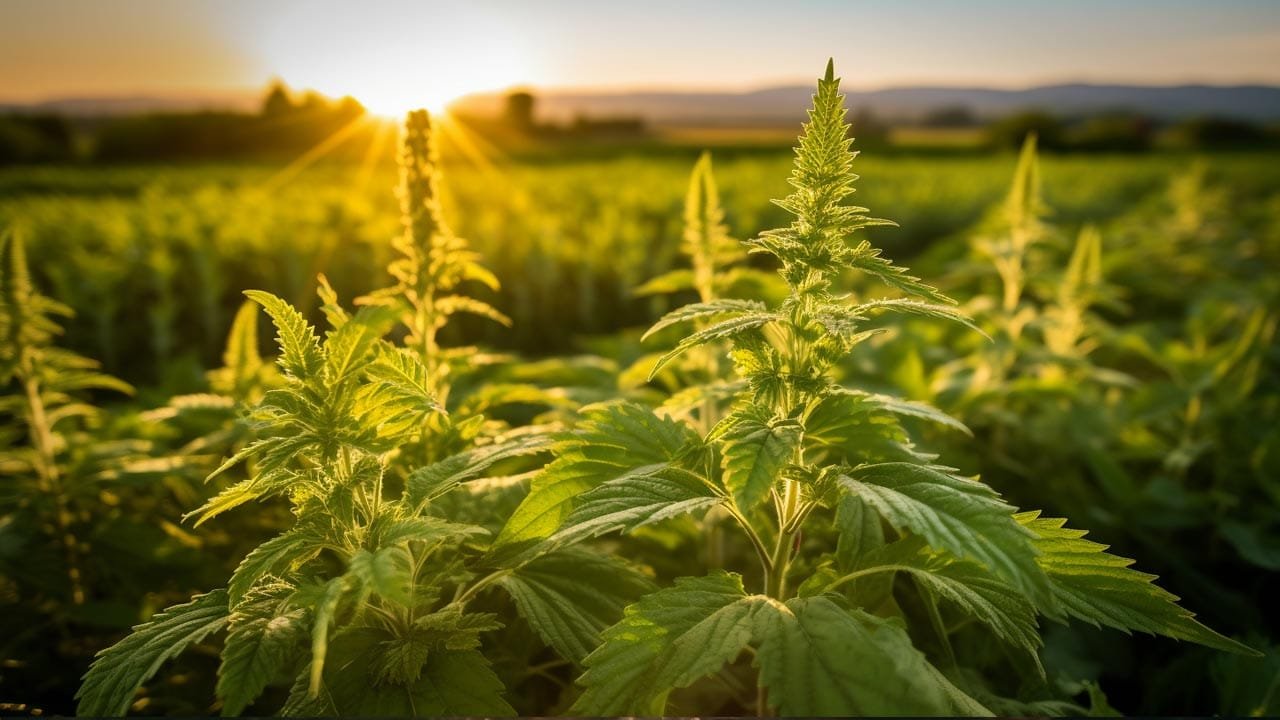

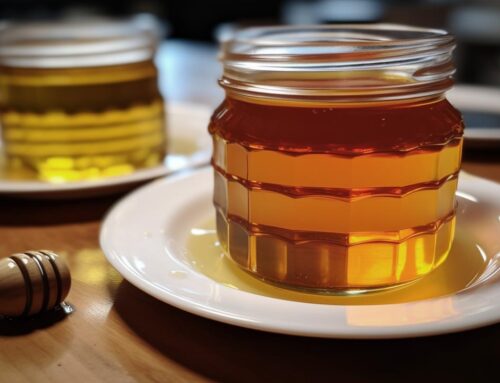
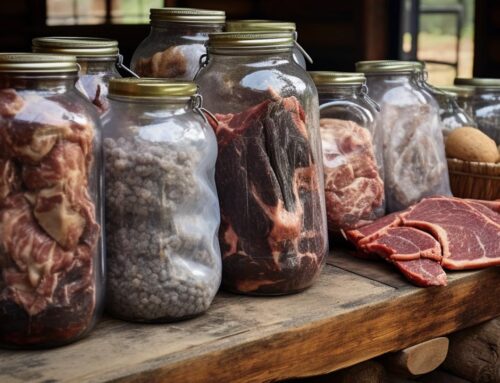
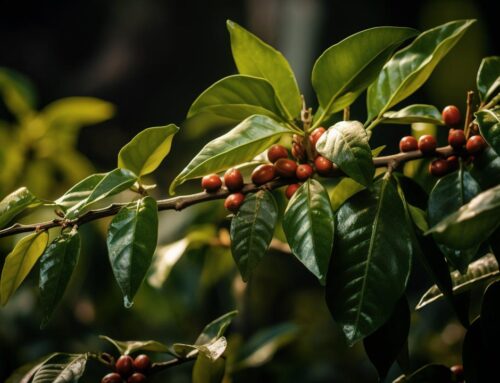
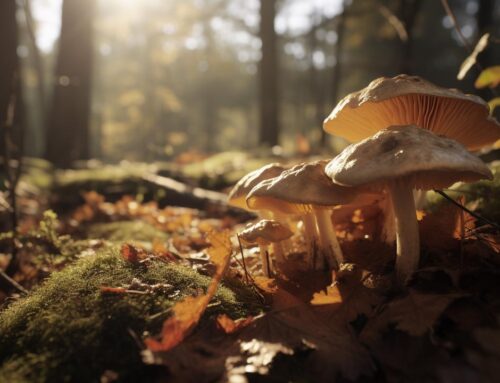
Leave A Comment